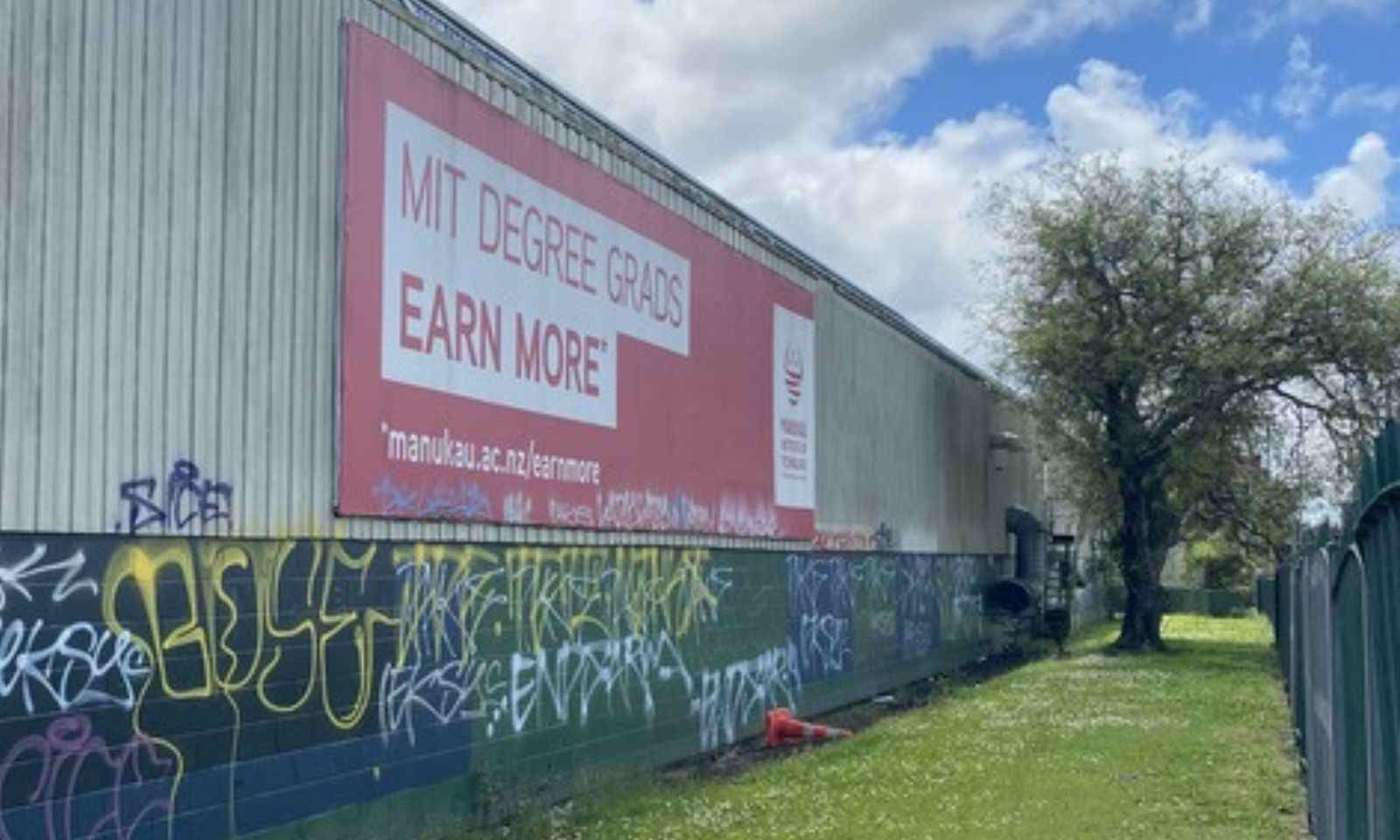

Ōtara veteran youth worker Sully Paea outside the derelict former MIT buildings.
Photo/ Te Rito Journalism Cadet/ Mary Afemata
Community demands action on disused polytech site in heart of Ōtara
As MIT's former buildings in Ōtara lie derelict, questions are being raised about what should replace it.


Ōtautahi's 1 Drop Nation celebrates brotherhood and legacy in new music



Pacific told to rethink ‘friends to all’ approach as region faces rising geopolitical pressure

Ōtautahi's 1 Drop Nation celebrates brotherhood and legacy in new music


A South Auckland community leader is warning that action needs to be taken to stop a former polytech site from becoming a breeding ground for graffiti and youth crime.
The property used to belong to the Manukau Institute of Technology (MIT) and has been a landmark in Ōtara for generations.
In 2019, about 10 hectares of land and buildings from the campus were sold to the Crown for $43m.

MIT advertising still adorns the polytech's former buildings in Ōtara. Photo/ Te Rito Journalism Cadet/ Mary Afemata
“We need services for education, for youth justice. We need service all right across the board and [instead] we get all the crumbs.”
Paea says Ōtara’s community is mature enough to understand what it needs and to work in partnership on the site’s future.
“So we sit here and we watch this building year after year since MIT had moved and this could be an asset that is beneficial to our community.”
He says youth crime in Ōtara has increased because the community lacks somewhere it can develop for its people.
“Ōtara needs a place where we can build ourselves, and it never happened.”

Community leaders has the old MIT buildings are contributing to a rise in crime. Photo/ Te Rito Journalism Cadet/ Mary Afemata
Te Tūāpapa Kura Kāinga/ the Ministry of Housing and Urban Development says the former polytech is being primarily held for future state housing.
Since the site has been vacant, there has been graffiti, a fire, and reports of buildings stripped of metal.
The ministry acknowledges how difficult it is to prevent things like theft and vandalism but says it engages security guards 24/7 at the site.
Mohammed Khan, a business owner in the nearby Ōtara shopping centre says it is like a ghost town since MIT relocated to newer facilities.
“Without asking, they didn’t even think about that. The shopping centre is gonna die,” says Khan.
Long-time Ōtara resident Diane Black says the site is an eyesore, and when she drives past them, the buildings look so lonely.
“It’s not being used. You can see it’s sitting there and ... I feel sorry for that building.”
She can’t believe the space isn’t being used when there are homeless people who could be helped out.
“Is it because we're not an affluent community that it's allowed to sit there? It's getting worse.”
Aupito William Sio is disappointed at the state of the place which is rich in history, and a public asset that is falling apart.
The former Manukau City Councillor says Ōtara is really the capital of South Auckland.
“They need to get down there and talk to the locals about how to make use of that building so that it’s serving the people of Ōtara.”
“I've heard young people talk about a hub for youth because the Ōtara sports centre there is too small … you need more public facilities, not less.”
Ōtara-Papatoetoe Local Board chair Apulu Reece Autagavaia has met with the ministry recently.
He says the land is undergoing a plan change which is delaying the process for construction, but there’s also general concern about how run down it is.
“We wanted to meet them because of the state of the actual places … all the graffiti, people going in there doing some really, really bad stuff.”
Autagavaia says from those talks he understands the ministry knows how bad it is, and wants to clean it up, and says staff will assess what buildings are vacant and habitable so that the community can utilise the space in the interim.
Despite moving to new premises, MIT’s branding is prominent on the graffitied buildings.
MIT says it is “looking a little unloved at present”, however, the ex-site is located in the heart of Ōtara and it wants to remain visible to car and foot traffic.
The ministry says the developer will propose a master plan for the site which could involve reusing some buildings, but was not able to provide a timeframe.